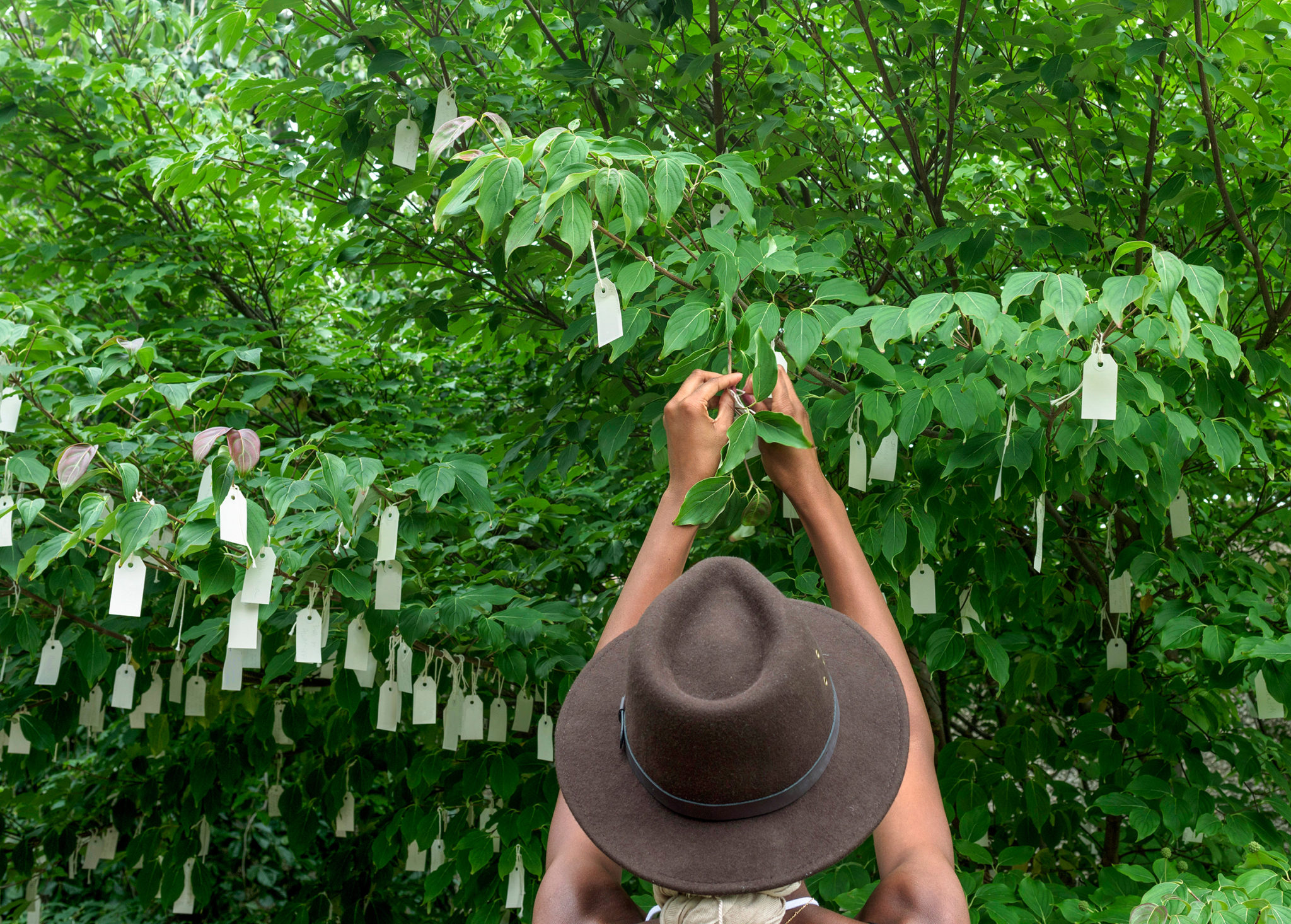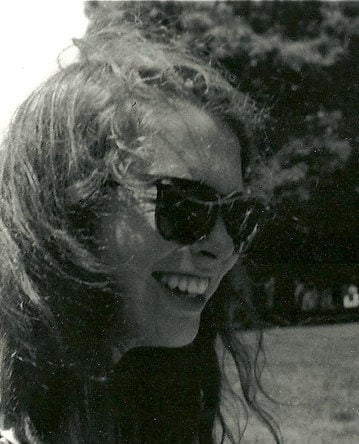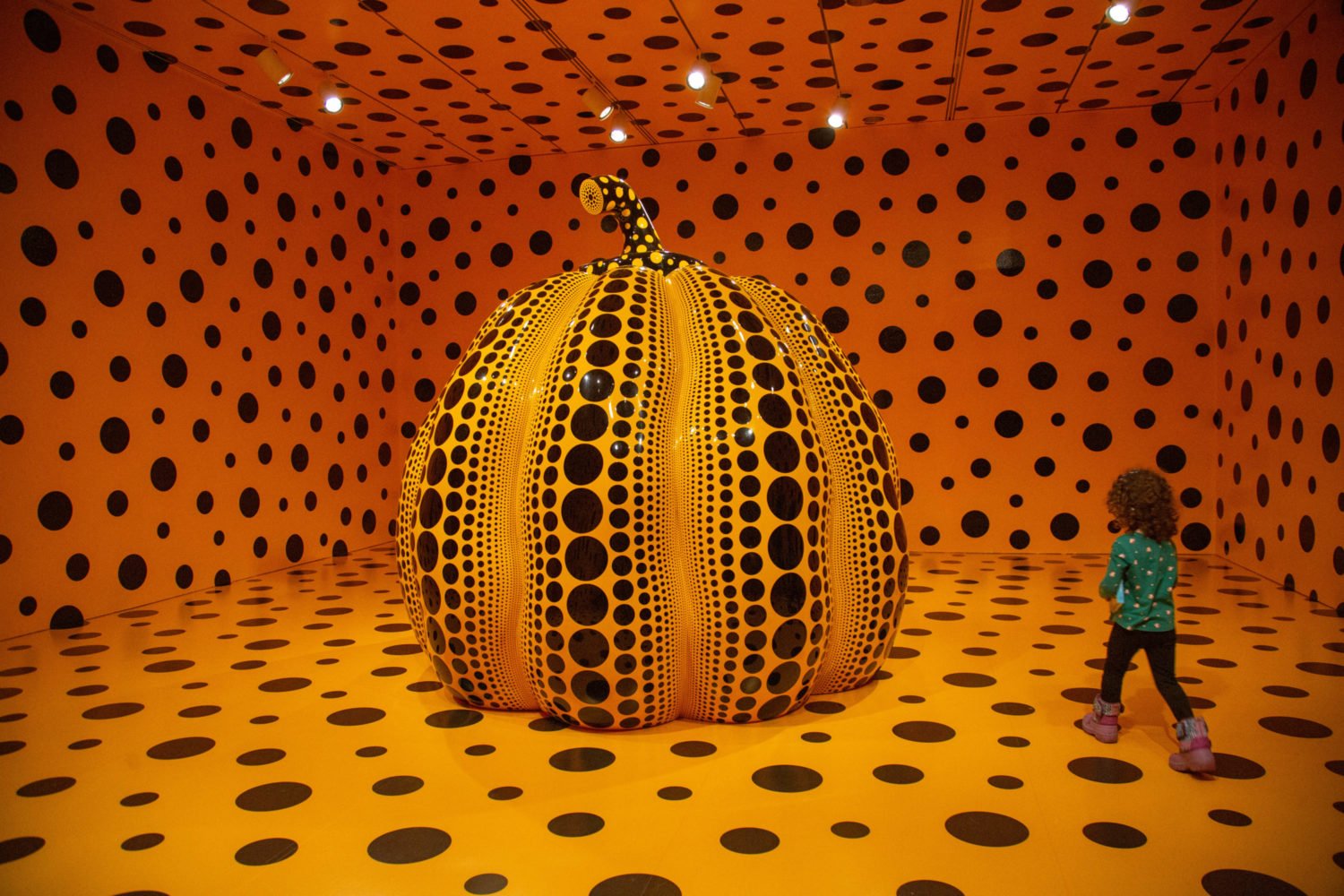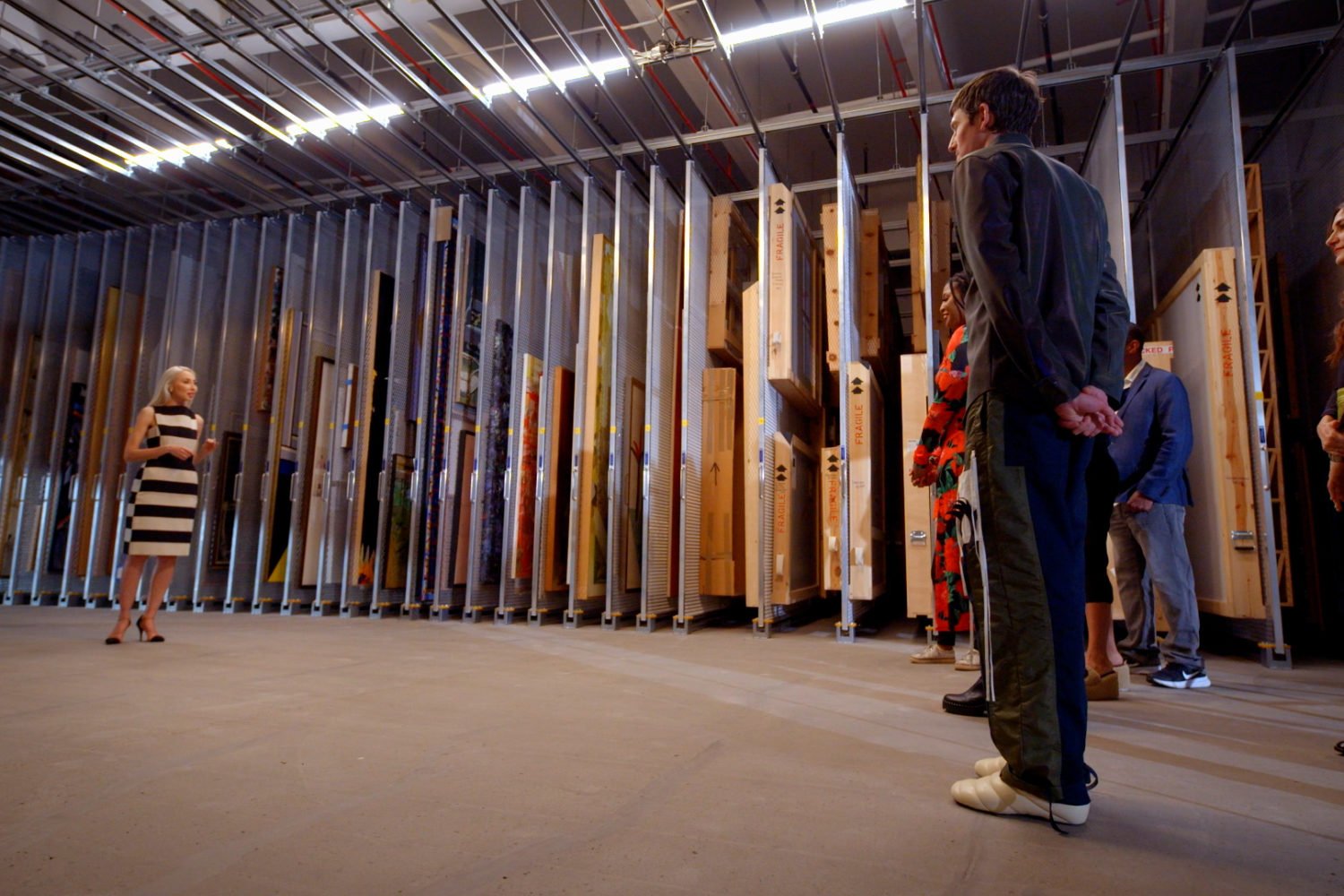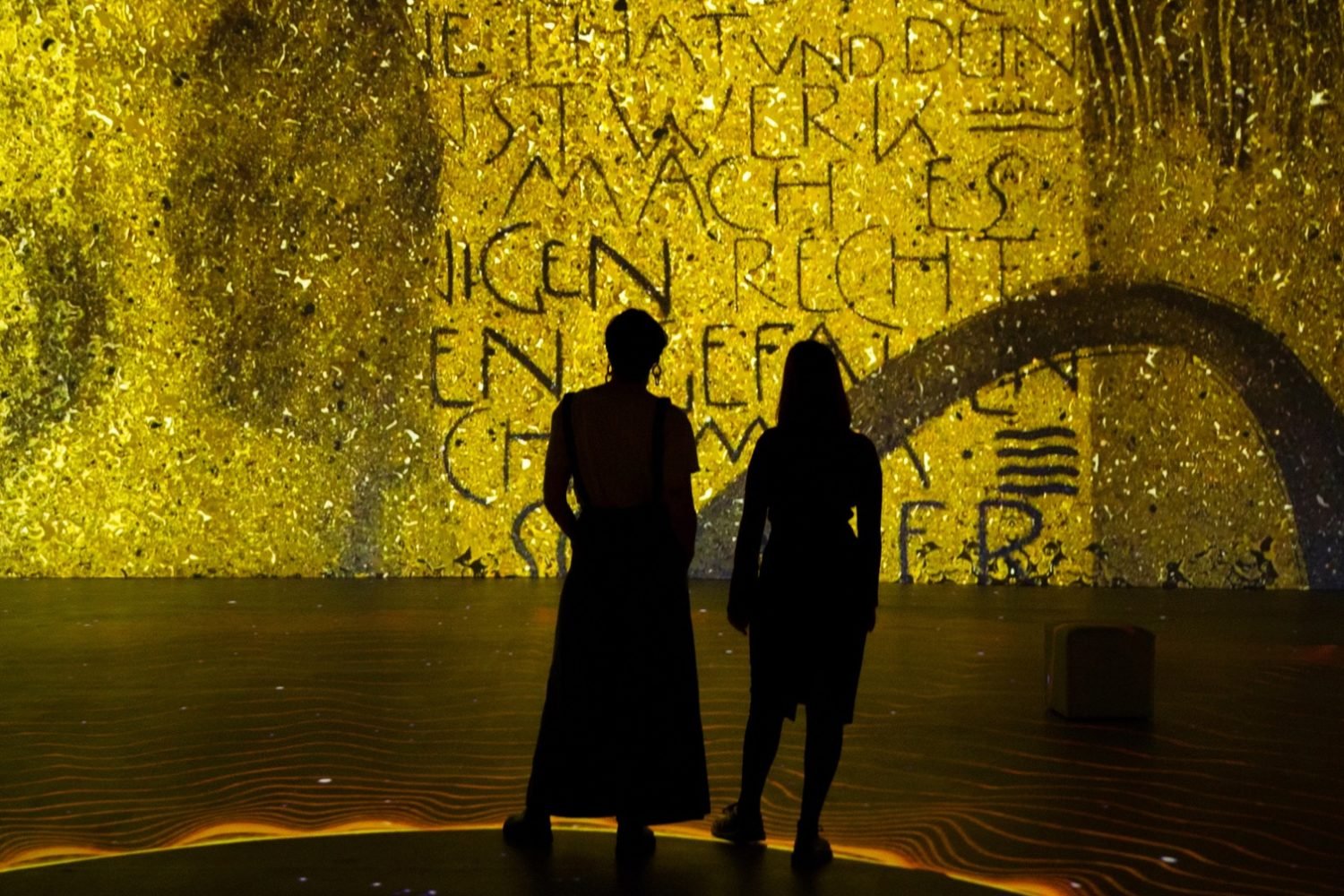Across from the Hirshhorn’s gallery, down a series of steps and in the sculpture gallery, there’s a tree. Upon first glance, it’s unremarkable, but look closer and you’ll see them—small slips of paper, so slight they could be leaves, hanging amongst the branches.
They’re wishes, hopes, dreams—whatever you want to call them. The artist Yoko Ono gave the tree to the Hirshhorn in 2007, and each summer, visitors can write their wishes on tiny slips of paper and tie them to the branches. Come fall, they’re gathered up and sent to Reykjavik, where they’re kept in Ono’s Imagine Peace Tower, a permanent installation.
The first time I saw one of Ono’s wish trees, I was studying abroad in London, 20 years old and on summer break from college. Probably hungover and tired from my morning class, I don’t remember what I wished for—maybe to run into the guy I liked that night or to find a job next semester, I can’t recall.
What I do remember is the look of it all: the branches of the tree standing strong and resolute, the wisps of wishes floating in between. How fragile they seemed, how impermanent.
One would think a wish tree in Washington would be full of paper slips containing thoughts about politics or the state of our union, and there were a few—I wish we would elect a sane and smart president, with humility, empathy, creativity, and drive. I wish the world would embrace goodness.
And there were a few misfits, too: I wish to have a lot of Pokemon cards. I wish for a lot of American Girl dolls for my birthday. I wish to be a rat.
For the most part, though? People wished for serenity and peace.
This isn’t anything particularly revolutionary; turn on a Miss America pageant and you’ll hear a litany of wishes for world peace. Yet it seems telling that in the midst of endless noise, never-ending news, and headline after headline, at the bottom line we aren’t really wishing for vengeance or justice or even the past—we just want quiet. Some room to be.
To be fair, I felt a bit invasive reading these strangers’ handwriting. There’s something intimate about looking at another’s wishes, as if you’re pulling the covers back on them while they’re still asleep and dreaming.
But it also made me feel more connected to this city than I have in a while. It can be so exhausting to live here—I often find myself coming home at night and wishing I could sleep through the whole next day, letting my phone fill up with Slack notifications and Tweets and requests for me to do this and that and never answering a single one.
Standing underneath that tree, I felt known, permanent. These little windows into wishes, like comet streaks between the people you pass on the Metro or sit next to on the bus, a reminder that we’re all just our hopes and fears tied into a living bundle.
Because we wish all the time, don’t we? When we apply for a job, tell someone we love them, stick a foot off the high dive. We wish for hope, for bravery, for love, for friendship, all the time everyday, whether we acknowledge it or not. That, at least, is something we have in common.
So chalk up these wishes for serenity and peace to a widespread feeling of helplessness, a need for escapism, a simple desire to be a rat, whatever you’d like. But there’s strength and power in a collection of thoughts, no matter what they’re written on.
Wishes don’t seem so helpless after all when they’re gathered together in trees.

